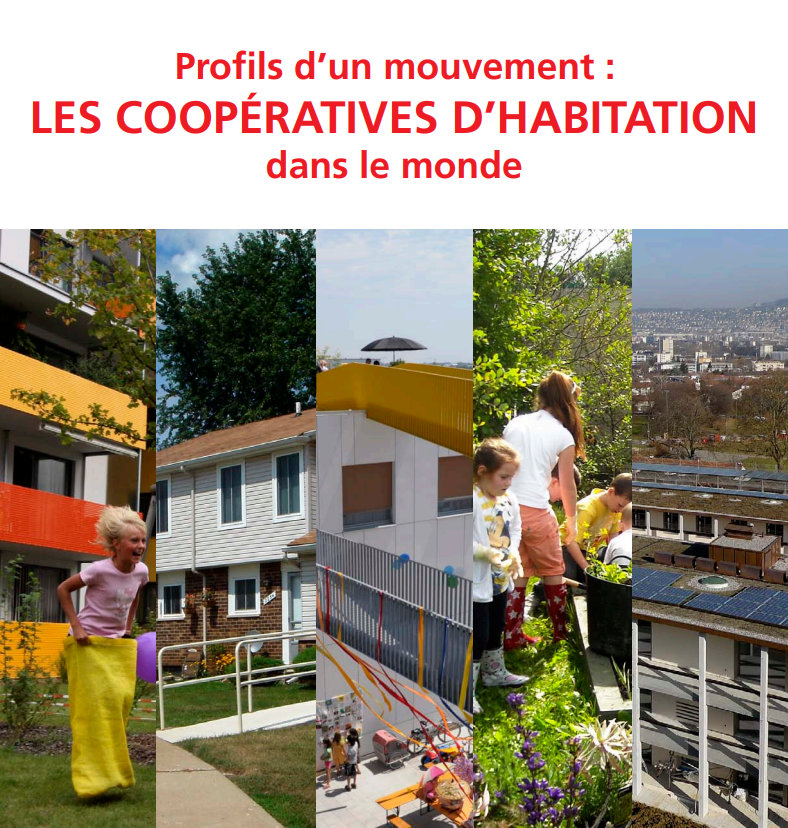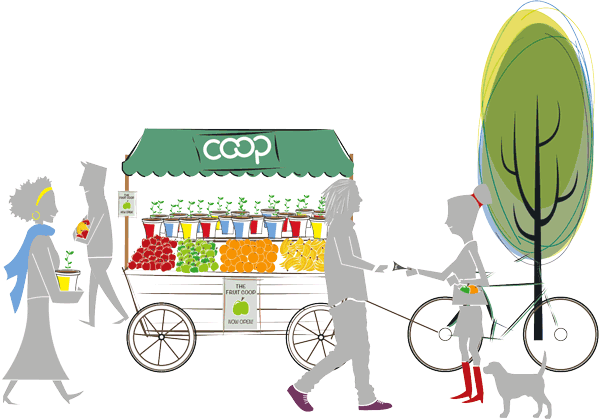About Australia

Emoh Ruo, Erskinville
History
The earliest known housing cooperative in Australia was ‘Co-operative Home’ established in 1888 by the Melbourne Anarchist Club (Metcalf 2008).
Cooperative activity to support housing in Australia has predominantly been around enabling the purchase of individual homes through building societies and credit unions (Patmore 2022). This is consistent with Australia’s “particular approach to social welfare (which) meant that for many years wage protection was substituted for an effective housing policy” (Apps 2021). As a result, Australia has had a high rate of home ownership with dependence on private rental housing for non-owners.
Significant investment in rental housing cooperatives occurred in the 1980s and 1990s through the Commonwealth-State Housing Agreement’s (CSHA) Community Housing Program, which had funds tied to housing cooperative development. This initiative of the then Minister for Urban Development, the Honorable Tom Uren, established a rental housing coop sector which now makes up the majority of the Australian housing cooperative sector. In these coops, the properties are usually held by a common equity company owned by the coops, and the housing cooperative manages the tenancies. In some cases, the properties are held by the coop, but in all cases, the members have no, or only nominal, equity in the assets.
The remainder of the housing cooperative sector is housing operated by First Nations cooperatives or Aboriginal community-controlled organizations; and private equity housing cooperatives. First Nations housing makes up about 10% of the housing coop stock and was largely formed in the 1970s. Private equity housing coops are mostly rural and make up about 18% of the co-op housing stock.
Tied funding for rental housing cooperatives ended in the 1990s and growth since then has been slow.
In 2012 the Australian and most state and territory governments introduced the National Regulatory System for Community Housing. Community Housing includes publicly funded housing delivered by not-for-profit providers such as cooperatives, associations or companies. Victoria developed its own regulatory system. Housing organizations generally have to be registered Community Housing Providers to be eligible for government funding.
Some housing cooperatives became registered Community Housing Providers and others did not.
In Victoria, many of the housing cooperatives came together and formed Common Equity Housing Limited (CEHL), a company to resource and support the housing cooperatives, where the coops managed their housing and member tenancies while CEHL provides coops with technical expertise, program management, asset portfolio management and resourcing. The Program evolved to provide housing cooperative models at a larger scale and in apartment buildings. CEHL is a registered Community Housing Provider.
The model was replicated to various degrees in other states with Common Equity NSW, Common Equity Housing South Australia (CEHSA) and Co-operation Housing (WA).
Context
Except for the 17% of housing cooperative homes which are funded by members’ private equity, most housing cooperatives in Australia have received funding from either a state or territory government or from the Australian government. They have funding agreements requiring rents to be affordable and many are registered as charities with GST exemptions. Being a charity requires the coop to charge rents that are less than 75% of the market rate.
Cooperative housing is distributed across Australia, with the majority in the most populous states – NSW and Victoria, and the remainder in the other states and territories.
| State |
Equity stock |
First Nations rental stock |
Common equity rental stock |
Other rental stock |
Total number of housing units |
| VIC |
145 |
116 |
1,980 |
562 |
2,803 |
| NSW |
623 |
94 |
534 |
475 |
1,726 |
| QLD |
112 |
458 |
0 |
10 |
580 |
| SA |
39 |
0 |
210 |
117 |
366 |
| ACT |
72 |
0 |
0 |
39 |
111 |
| TAS |
26 |
0 |
0 |
81 |
107 |
| WA |
6 |
0 |
63 |
42 |
111 |
| NT |
0 |
0 |
0 |
0 |
0 |
| Australia |
1,023 |
668 |
2,787 |
1,326 |
5,804 |
Seaborn, L (2024)
Description
The housing cooperative sector in Australia is made up of four types – common equity housing cooperatives, Aboriginal housing cooperatives, other rental housing coops and private equity housing cooperatives. Between them, they have nearly 6,000 units of housing.
The common equity housing coops make up nearly 50% of the housing. They are rental housing cooperatives where the ownership of the housing resides with a common equity company whose shareholders are member housing coops. These housing coops are generally funded through government programs for affordable housing and the housing may be purpose-built or be existing housing that is bought or transferred. The common equity company may hold title to the properties outright, or titles constrained with a government mortgage, or the property may be owned by the government and leased to the common equity company.
The common equity companies lease houses or apartments to their member housing cooperatives who in turn rent them to their members. The common equity companies also provide services to the cooperatives such as maintenance management, governance support and training. Cooperatives provide the day-to-day management of the housing and to varying degrees, management of tenancies. The arrangements vary between states and depend on which program the housing was funded under.
The First Nations housing cooperatives or community-controlled organizations make up 11% of the sector. They were largely formed in the 1970s when most of the broader Aboriginal and Torres Strait Islander cooperative sector was also formed.
Other rental housing cooperatives make up 23% of the sector. These are largely urban and suburban and include a couple of student cooperatives. These coops vary in size from 400 houses to five. They operate individually as entities, and like the common equity rental cooperatives, are largely government-funded.
In all the rental cooperatives, the housing belongs to either the cooperative, the common equity company or the government. The member does not have individual equity, and the cooperatives are non-distributing (non-profit). Many housing cooperative members who receive government benefits also receive rent assistance which is a form of subsidy from the federal government to rental housing providers (except government-owned public housing).
Private equity housing cooperatives make up 18% of the housing. These cooperatives are often rural, with the first one formed in 1888. The land is held in common and ownership is of the individual dwelling and a share of the common property, usually using either community title or strata title. Although fees may be paid for the costs associated with common property, rent is not paid to the cooperative.
Financing
Financial assistance provided to housing cooperatives varies according to different government programs. For example, the Victorian government’s Big Housing Build program has funded the construction of housing for a number of housing cooperatives in Victoria.
Ongoing government support for housing cooperatives is also received through commonwealth rent assistance (CRA) paid to recipients of government benefits to subsidize rents.
Currently (2023), no government programs are targeted specifically at the development of new housing cooperatives. There has been some growth of housing cooperatives, particularly in the state of Victoria where the state government has heavily invested in affordable housing in recent years.
Legal Framework
The legal instruments for the coop housing sector in Australia are:
- The Co-operative National Law and the various state Co-operative Acts: these acts determine the cooperatives’ organizational rules and generally govern their conduct as cooperatives.
- The National Regulatory System for Community Housing applies to all of the social housing cooperatives, with the Victorian and West Australian equivalents applying in those jurisdictions.
- Tenant legislation acts apply to rental housing cooperatives.

Cohousing Co-operative in Tasmania/lutruwita cohousing coop
The Cooperative Housing Movement
The Australian cooperative housing movement consists of housing cooperatives, the people who live and work in them and the organizations and individuals that support and serve them.
Funding for housing cooperatives in Australia in the 1980s included establishing resourcing and development bodies in each state. These organizations either no longer exist or have evolved into Common Equity companies.
The Australian Co-operative Housing Alliance (ACHA) is an informal affiliation of the four common equity companies in addition to a representative from the other rental cooperatives in Victoria. All ACHA members are members of the Business Council of Co-operatives and Mutuals who provide Secretariat support to ACHA and jointly lead national work to support the development of housing cooperatives.
References
Apps, A (2021) ‘Housing the ‘missing middle’ — The Limited Equity Housing Co-operative as an intermediate tenure solution for Australia’s growing renter class’ Australian Property Law Journal
Metcalf, B (2008) ‘The Encyclopedia of Australian Utopian Communalism’, Arena, 31, pp. 47
Patmore, G (2022) Housing Co-operatives in Australia, University of Sydney, unpublished
Seaborn, L (2024) Australia’s Housing Co-operative Sector BCCM https://bccm.coop/wp-content/uploads/2023/04/Australias-housing-co-operative-sector-BCCM-report.pdf

Lasa St, Cabramatta – new development- part of Vietnamese Co-op (Lac Viet)
Resources Tagged "Australia"
This study investigates how residents in rental housing cooperatives in Melbourne, Australia, and Choluteca, Honduras, experience a "sense of home." Using Social Practices Theory and interviews, the authors uncover how personal, social, and physical elements shape home-making in collaborative living. The findings highlight the role of autonomy, participation, and resilience in building meaningful homes outside market-driven models.Read More
Australia Research Paper
Discover insights from BCCM's 2024 European Study Tour Report, highlighting innovative cooperative housing models in Denmark, Austria and Switzerland. Learn about public policies, financing strategies, and sustainable practices shaping the future of affordable housing.Read More
Financing and Development Australia Report
This Western Australian Government report reviews Austria's financing model for affordable housing, focusing on limited-profit housing associations and Housing Construction Convertible Bonds (HCCBs). Austria’s model leverages low-interest loans, subsidies, and private investment to keep housing costs down. The report recommends Australia explore similar strategies to enhance affordable housing through stable subsidies, support for low-income access, and competitive land development.Read More
Financing and Development Australia Report
This resource from Australia's Co-operation Housing is a guide on establishing a community land trust (CLT) using a cooperative legal structure. Furthermore, it addresses the key question of how the core objectives of CLTs and cooperatives can be combined.Read More
Legal Asia & Pacific Educational
This report discusses the growing presence of housing cooperatives in Australia, serving a variety of household types across the income spectrum, particularly low- and moderate-income households.Read More
Policy Australia Report
Five reports investigate housing policy from other countries for solutions to the UK’s housing shortage. Each of the five reports is a comparative study of housing policy internationally with a particular focus on Australia, Canada, Ireland and New Zealand.Read More
Policy Australia Report
In many countries, housing cooperatives are longstanding and stable components of housing systems, providing a range of housing options that sit between the historically dual tenure poles of renting and owning. In others, such as ...Read More
Research Australia Research Paper
Australia Looks at Austria for Affordable Housing Financing ModelsRead More
Research Australia Research Paper
This report on best practices for multi-tenure developments is based on extensive research and looks at bringing together social, affordable and private housing in multi-tenure developments that deliver vibrant communities that wo ...Read More
Financing and Development Australia
South East Housing Co-operative in Victoria, Australia was founded through a merger of four co-operatives in 2000. They sought to consolidate community assets and ensure members would have control over an efficent and effective ...Read More
Community Australia
L'habitat coopératif offre des logements abordables à long terme, gérés par les résidents, avec des avantages sociaux, économiques et environnementaux avérés. Malgré son impact mondial, ce secteur reste méconnu.Read More
Financing and Development Global Report
Explore public policies supporting cooperative housing worldwide in this comprehensive report. Discover how governments and cooperatives collaborate to create sustainable and affordable housing solutions globally.Read More
Research Global Research Paper
The Commission's final report on Cooperative and Mutual Housing (Bringing Democracy Home) highlighted the need for consideration of the role that cooperative and mutual housing could play in the national housing strategy. The Fina ...Read More
Financing and Development Global Report
Par cette publication, nous souhaitons ouvrir le débat sur le logement en tant que droit fondamental et enjeu métropolitain, en mettant en lumière l’expérience de grandes métropoles et dans l’espoir d’inspirer des idées nouvelles pour aborder cet enjeu absolument fondamental de l’urbanisation moderne.Read More
Advocacy Global
In 2000, United Nations (UN) member states recognised the need to build global partnerships for development and the exchange of expertise as one of the Millennium Development Goals. Across the international development field, part ...Read More
Financing and Development Global
New report: The Capital Conundrum for Co-operatives "The Capital Conundrum for Co-operatives", a new report released by the Alliance’s Blue Ribbon Commission explores ideas and options available to co-operatives that need suitab ...Read More
Financing and Development Global
Financing the development of housing co-operatives is a challenge and more so in time of financial restrictions and uncertainty. CHI members discussed the issue during a seminar held in November 2009 in Geneva. Presentations w ...Read More
Financing and Development Global
The Forest Products Annual Market Review 2013 reports that the development of new refinement processes has led to the production of new and more affordable wood based products such as cross-laminated timber (CLT). The report sta ...Read More
Sustainability Global
Updated Guidance Notes on the Co-operative Principles, edited by David Rodgers, former President of Co-operative Housing InternationalRead More
Governance Global
The ILO views cooperatives as important in improving the living and working conditions of women and men globally as well as making essential infrastructure and services available even in areas neglected by the state and investor-driven enterprises. Cooperatives have a proven record of creating and sustaining employment – they provide over 100 million jobs today; they advance the ILO’s Global Employment Agenda and contribute to promoting decent work.Read More
Legal Global
Cooperative housing offers long-term, affordable homes governed by residents, with proven social, economic, and environmental benefits. Despite its global impact, the sector remains under-recognized.Read More
Financing and Development Europe Report
Student housing cooperatives have become very popular in the USA and many of these housing co-operatives are members of organizations such as NASCO. Unlike a resident who acquires shares at market rates to earn the right to occupy ...Read More
Community Global
The Good Governance Charter for Housing Co-operatives was launched at the ICA Housing Plenary in Manchester in November 2012.It has three parts:A 10-point set of good governance practicesAn interpretive statement for each good p ...Read More
Governance Global
This second volume of Housing Co-operative Profiles focuses on African countries, showcasing the ingenuity and commitment of cooperators working under difficult conditions. It offers insights into the legal, financial, and historical contexts of housing co-ops, aiming to inspire broader adoption of the model as a solution to the global housing crisis.Read More
Community Global Report
The Blueprint for a Co-operative Decade is a worldwide campaign to “take the co-operative way of doing business to a new level”. The five key elements of the Blueprint are participation, sustainability, identity, legal frameworks and capital. The Blueprint is particularly relevant to co-operative housing and the Blueprint interpretation for co-operative housing below explains how.Read More
Governance Global





























